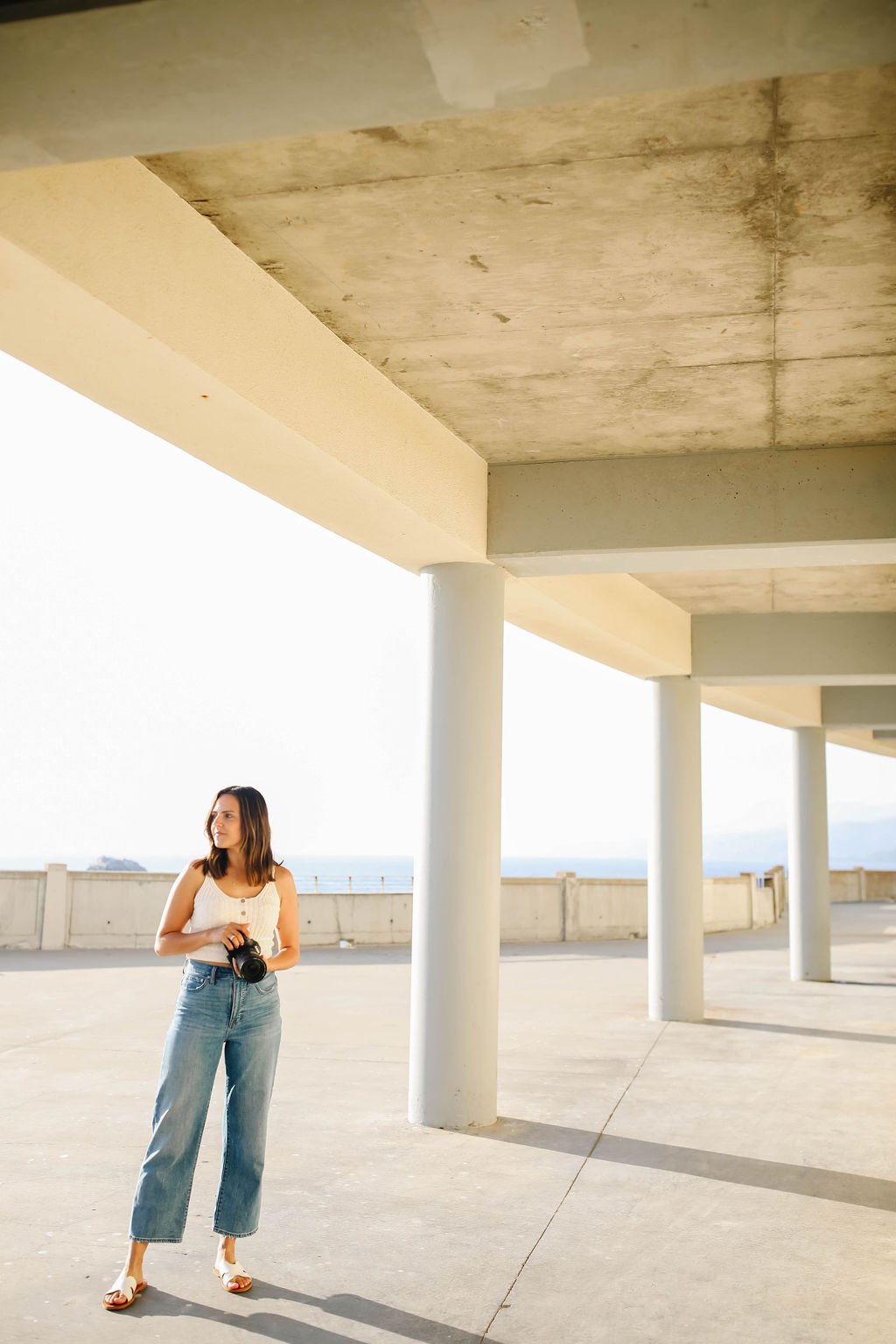Earlier this month I shared a few tips for creating your own content without hiring a professional photographer. Today, I’m going to go a little deeper and share some insight behind my basic camera settings to help you get a handle on shooting in manual. You’ll have better control and overall better images if you can get comfortable controlling your settings.
Basic Camera Settings for Beginners
Aperture (or F-Stop)
The aperture setting determines the depth of field, or how much of the image is in focus. For starters, if I’m shooting portraits inside in a naturally lit room, or outside in the open shade, I tend to keep my camera’s aperture as close to 2.8 as possible. This allows for a crisp subject with a slight blur in the background.
However, when I shoot food or flat lays, I like to increase my aperture to 4.0 or higher. Food has a lot of detail and often some depth, so you want to be sure to capture that.
When I shoot interiors, my goal is for the entire foreground and background to be in focus, so I need a very deep depth of field. Therefore, I usually set my aperture between F8 and F11. This is a very different technique from portraits and still life. Most of the time, to shoot with an aperture this narrow and also keep my ISO low (more on this later), I’ll need to use a very slow shutter speed (to make up for lost light), so a tripod is necessary.
ISO
As a general rule of thumb, it’s ideal to keep your ISO as low as possible. The ISO is controlling your camera’s sensitivity to light, so increasing the ISO will brighten your image. The caveat with ISO is that with increased sensitivity comes increased noise, or grain, in your image. To a certain point, this goes undetected, especially in the highlights. But depending on your camera, the grain becomes noticeable around ISO 800 and higher. Here are two images that look about the same in terms of exposure.
They look similar at a distance, but when you zoom into a shadow, you can see the difference in noise.
How high you can comfortably bring your ISO largely depends on your camera. Both cameras I use can shoot at a high ISO without distorting the image significantly. Typically the higher-end your camera is, the higher the ISO can go. So unless I’m shooting at night with artificial light, I try to keep my ISO close to 100 but definitely below 800. If you’re shooting in a well-lit area, this shouldn’t be an issue!
Shutter Speed
Shutter speed is probably the easiest camera function to grasp. It’s just how fast your shutter opens and closes. Simple! The slower the shutter speed, the more light can come through, and the more motion is visible.
Without a tripod, the absolute slowest I’d set my shutter to is 1/60th of a second for a stationary subject. Usually, if it’s a person, I try to stay above 1/100th. When I shoot interiors, I know I want to keep my ISO and aperture at certain values, so my shutter speed is the main setting that changes. I shoot interiors with a tripod, so I’ve been able to handle 2 second-long exposures. This wouldn’t be possible without a tripod.
Putting It All Together
Now that you’ve gotten an idea of the basic camera functions, it’s time to decide how to choose your settings. I almost always start by setting my aperture based on what I’m shooting.
Once my aperture is set, I’ll start with a low ISO and manageable shutter speed, (usually between 1/125 and 1/500 depending on how much light is available) then take a test shot. If it’s too dark, I first slow down my shutter speed. Then, if it’s still too dark, then I begin to raise my ISO. If the image is too bright, I adjust the shutter speed accordingly. There’s no real downside to having a super fast shutter speed unless you’re trying to capture motion. Most importantly, practice with test shots to see how different changes in settings affect your final image.
My aperture setting is a stylistic choice. There are plenty of photographers who shoot as low as f1.2 and f1.4 depending on their lens, it’s just a little harder to get your subject in sharp focus this way. Use this in conjunction with my 5 Tips for DIY photography and you’ll be creating gorgeous content in no time!
Tired of DIYing your photography and ready to work with a photographer to capture beautiful images for your brand? Contact us today to learn more about our photography packages!

be the first to comment